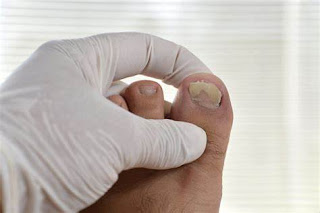Toenail fungus, also known as onychomycosis, is a common condition that affects millions of people worldwide. It is caused by a fungal infection that affects the toenails, causing them to become thick, discolored, and brittle. If left untreated, toenail fungus can lead to serious complications, including the loss of the toenail or the spread of the infection to other parts of the body. In this article, we will discuss the most effective treatments for toenail fungus.
1. Oral Antifungal Medications
One of the most effective treatments for toenail fungus is oral antifungal medications. These medications work by targeting the fungi that cause toenail fungus, killing them and preventing them from spreading. The most commonly prescribed oral antifungal medications for toenail fungus are terbinafine and itraconazole. These medications are taken for several weeks to several months, depending on the severity of the infection.2. Topical Antifungal Medications
Topical antifungal medications are another effective treatment for toenail fungus. These medications are applied directly to the affected toenail, where they work by killing the fungi that cause the infection. The most commonly prescribed topical antifungal medications for toenail fungus are ciclopirox and efinaconazole. These medications are typically applied once or twice a day for several months, depending on the severity of the infection.3. Laser Treatment
Laser treatment is a relatively new and highly effective treatment for toenail fungus. This treatment involves using a laser to heat and destroy the fungi that cause the infection. Laser treatment for toenail fungus is typically done in a doctor's office and can take up to an hour to complete. Most people require several laser treatments to completely eliminate the infection.
4. Surgical Treatment
In severe cases of toenail fungus, surgical treatment may be necessary. This treatment involves removing the affected toenail and cleaning the nail bed to remove any remaining fungi. Surgical treatment for toenail fungus is typically done under local anesthesia and is a relatively simple procedure.5. Home Remedies
While home remedies are not as effective as prescription treatments, they can be a good option for mild cases of toenail fungus. Some effective home remedies for toenail fungus include:
- Soaking the affected toenail in a mixture of vinegar and water
- Applying tea tree oil to the affected toenail
- Using a topical ointment that contains snakeroot extract
While these home remedies may help to alleviate the symptoms of toenail fungus, they are not a substitute for professional medical treatment.




















